Speckled Wood Butterfly - Pararge aegeria
Phylum: Arthropoda - Class: Insecta - Order: Lepidoptera - Family: Nymphalidae
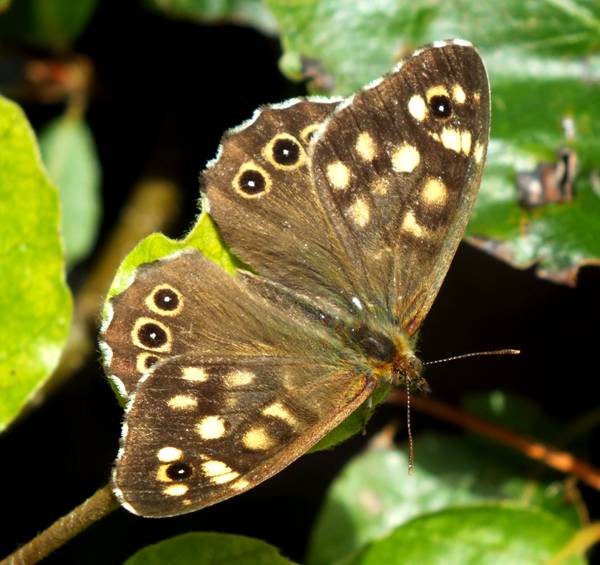
This is a butterfly most commonly associated with woodland and unkempt hedgerows, particularly where there is damp and partial shade; however, it also ventures into sunny gardens, tending to keep to hedges and shrubby areas. On bright sunny days, Speckled Woods are often to be seen flitting around in forest clearings, where their speckled appearance blends in with the dappled patterns of light and shade.
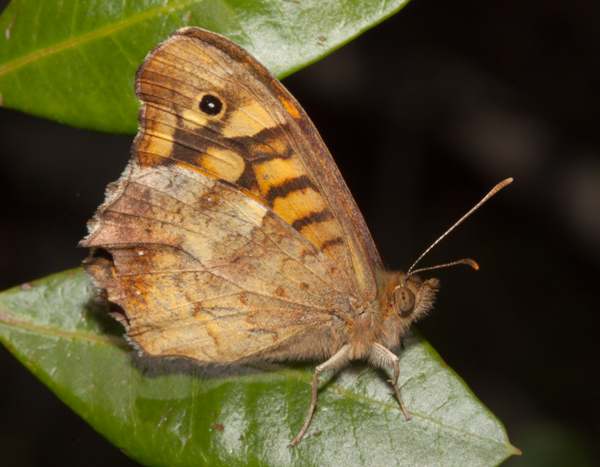
We see plenty of Speckled Wood butterflies in Portugal and other parts of southern Europe. They are Pararge aegeria ssp aegeria, and their wings are rather lighter (see the picture above and the one immediately below) than the Speckled Woods seen in Britain and their wings are decorated with somewhat larger blotches that are orange rather than cream.
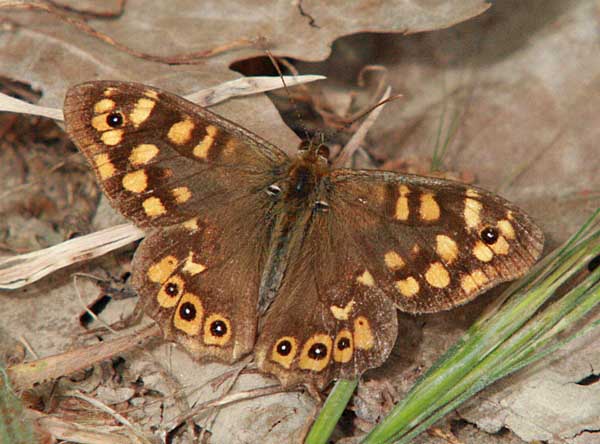
The specimens pictured above is Pararge aegeria ssp aegeria; they were photographed in Portugal's Algarve region and in Crete.
Males and females are very similar, with typical wingspan 4 to 4.5cm, the females being brighter coloured and slightly larger than the males.
In northern Europe, Pararge aegeria ssp tircis, shown below (photographed in Wales during August) has upperwings that are mid to dark brown with pale cream blotches.
Colour forms intergrading between ssp tircis and ssp aegeria are encountered as you travel between northern Europe and the Mediterranean region/North Africa.
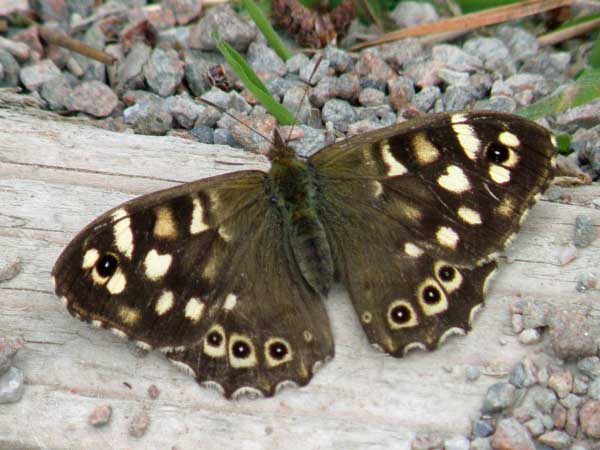
In Britain the Speckled Woods seen in late summer tend to be rather darker than those that emerge in springtime. The late season specimen pictured here has dark-brown wing background, whereas early season specimens are noticeably paler and generally somewhat larger.
Distribution
Speckled wood butterflies can be found throughout Britain and Ireland; they are usually on the wing from March right through to October but are at their most plentiful in the summer months.
Lifecycle
The Speckled Wood is the only butterfly in Britain known to overwinter in both larval and pupal forms. The result is that adult butterflies emerge over several months, some as soon as March or early April and others well in to September.
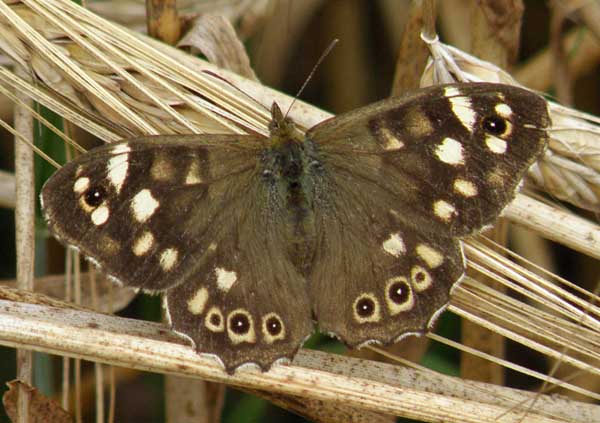
Depending on the weather, there can be two or three generations per year in Britain and Ireland.
Speckled Woods lay their straw-yellow ribbed eggs on grass in the dappled light of woodland edges or beside bushes in shrubby grassland. The eggs hatch in a week or thereabouts and the caterpillars, which are green with yellow and white stripes, feed during the day. The caterpillars eat a wide range of soft-leaved grasses including Cocksfoot, Couch Grass, Yorkshire Fog and various meadow grasses (Poa species).
When fully grown the caterpillars pupate, with the chrysalises, in varying shades of green from pale to quite dark, hanging from woody stems.
As winged adults, Speckled Woods live for no longer than three weeks.
Studying butterflies and moths...
Acknowledgements
This page includes pictures kindly contributed by Simon Harding and Rob Petley-Jones.
Excited at the prospect of flyfishing? So are we, and we're pretty sure you would find the Winding River Mystery trilogy of action-packed thrillers gripping reading too. Dead Drift, Dead Cert, and Dead End are Pat O'Reilly's latest river-and-flyfishing based novels, and now they are available in ebook format. Full details on our website here...
Buy each book for just £4.96 on Amazon...
Please Help Us: If you have found this information interesting and useful, please consider helping to keep First Nature online by making a small donation towards the web hosting and internet costs.
Any donations over and above the essential running costs will help support the conservation work of Plantlife, the Rivers Trust and charitable botanic gardens - as do author royalties and publisher proceeds from books by Pat and Sue.
